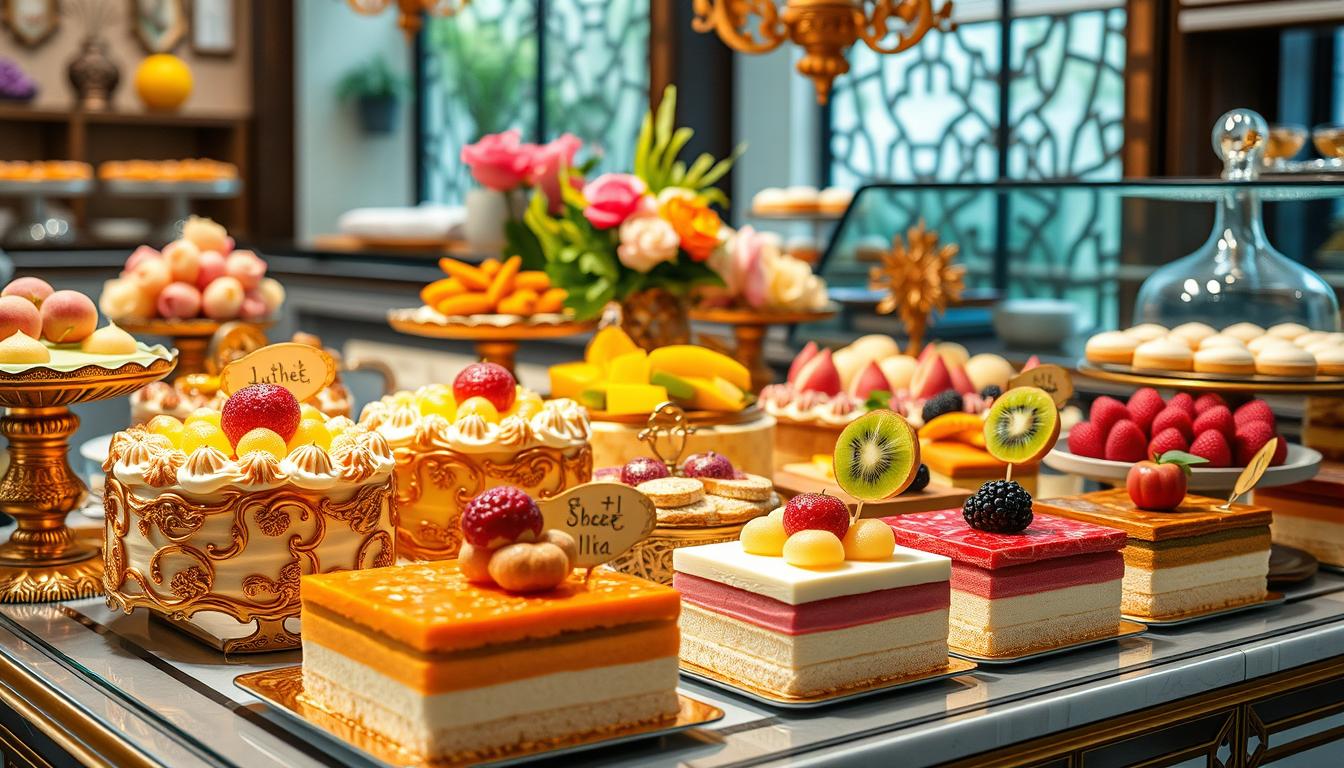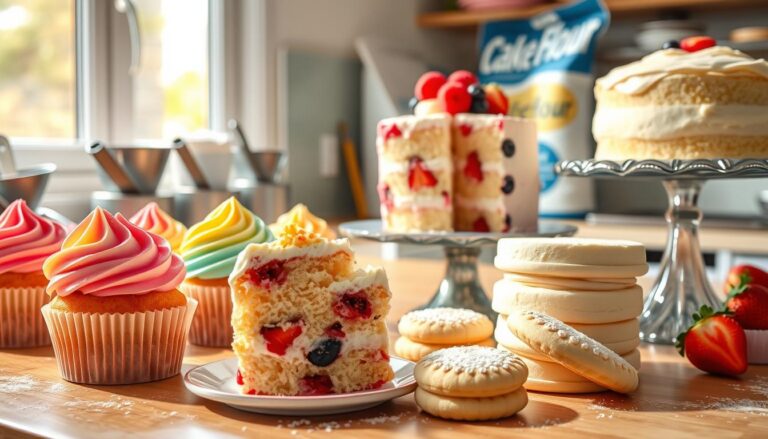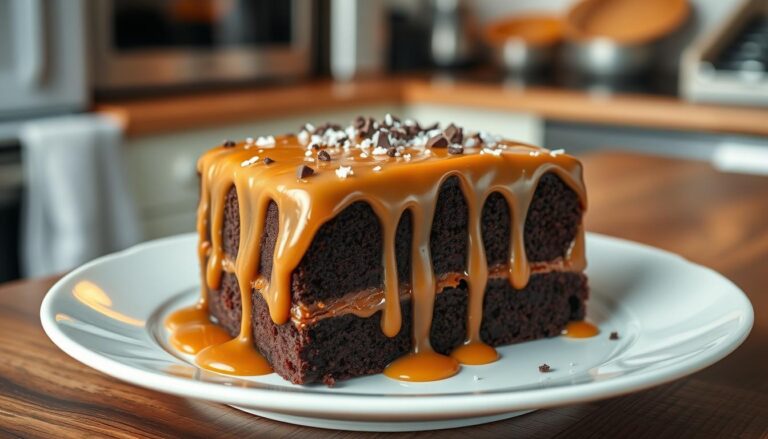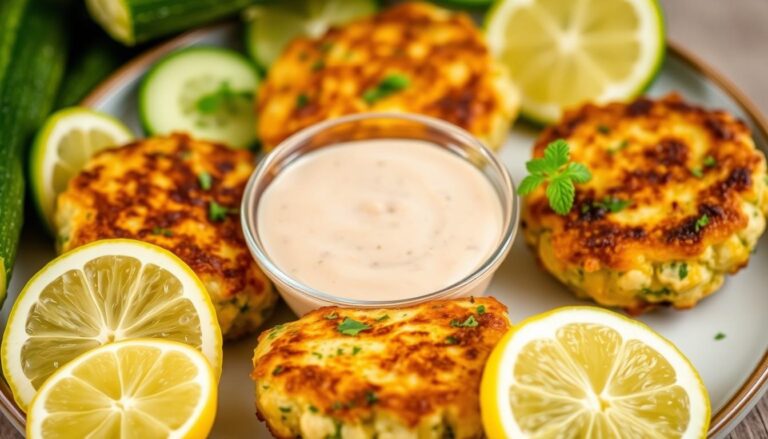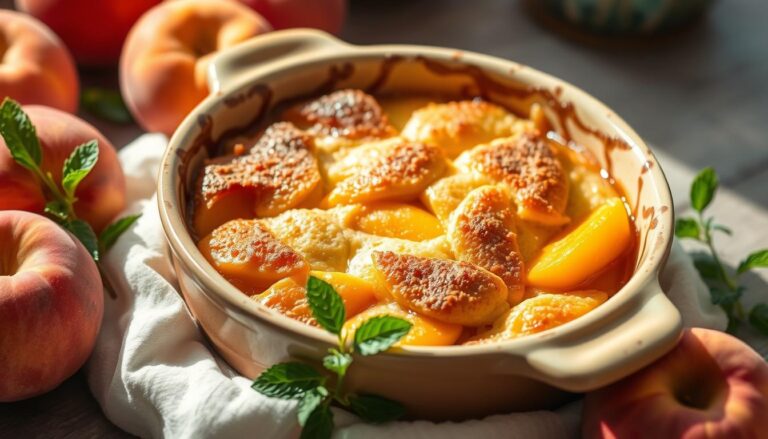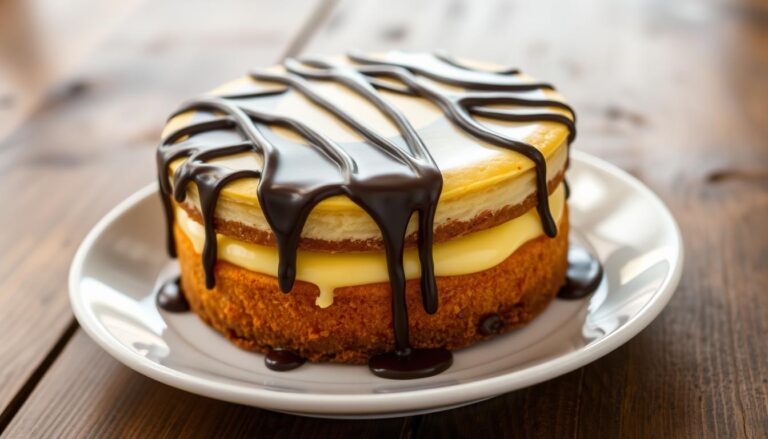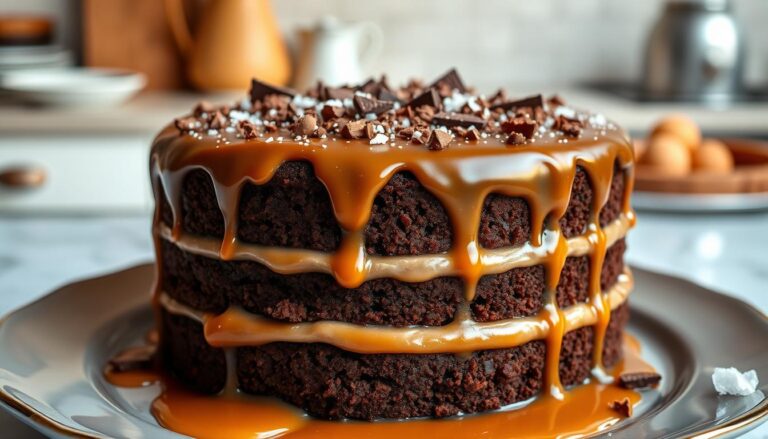Simple Chinese Fruit Cakes
Growing up in a vibrant Asian household, I always looked forward to special occasions. A beautiful ans Simple Chinese fruit cakes would grace our table. It was more than just a dessert—it was a celebration of family, tradition, and culinary artistry.
Asian bakery desserts have a unique charm. The Chinese fruit cake is a perfect balance of light, airy sponge and fresh, vibrant fruits. Each slice tells a story of precision, care, and cultural heritage.
These incredible desserts are not just about taste—they’re about creating moments of joy. Whether it’s a birthday, family gathering, or a sweet afternoon treat, the Chinese fruit cake brings people together in the most delicious way possible.
Table of Contents
Understanding this simple chinese fruit cakes
The world of exotic fruit cake is a mix of culinary traditions. It combines unique baking methods to make simple ingredients into amazing desserts. Starting your journey with tropical Asian desserts means learning the art of making delicate, fruit-filled cakes.
Traditional Asian fruit cakes have some key features:
- Ultra-soft sponge texture
- Minimal added sweetness
- Fresh seasonal fruit integration
- Light whipped cream frosting
The secret to these cakes is their special preparation. Taiwanese bakers use a castella cake technique with egg whites. This makes the cake very soft and fluffy. They separate eggs and bake in a water bath for a tender crumb.
Your exotic fruit cake will be special by balancing soft cake layers with bright fruit. Choose fruits that match the cake’s sweetness and add refreshing flavors.
Learning this art takes patience, precision, and a love for the special techniques of Asian desserts.
Essential Ingredients for Perfect yet simple Chinese Fruit Cakes
Making an authentic Asian cake is all about the right mix of ingredients. Start by picking top-notch Asian cake ingredients. These will make your cake light and full of flavor.
The heart of a great fruit cake is its ingredients. Let’s look at the key parts that make a simple dessert into a work of art:
- Cake Flour: Gives a soft, delicate texture
- Egg Whites: Essential for a light structure
- Caster Sugar: Adds smooth sweetness
- Vegetable Oil: Keeps the cake moist and tender
- Cream of Tartar: Helps egg whites stay fluffy
Choosing the right fruits is key to your cake’s success. Use seasonal fruits like strawberries, kiwis, and mangoes. They add color and flavor to your dessert.
| Ingredient Category | Key Components | Purpose |
|---|---|---|
| Base Ingredients | Cake Flour, Eggs | Structure and Lightness |
| Sweeteners | Caster Sugar | Balanced Sweetness |
| Moisture Agents | Vegetable Oil, Vanilla | Tender Crumb |
| Fruit Components | Fresh Seasonal Fruits | Flavor and Decoration |
Whipped cream frosting needs extra care. Use stabilized cream with gelatin to keep your cake looking perfect.
Creating the perfect Chinese fruit cake is a skill. It’s about using quality ingredients and loving the art of making desserts.
Mastering the Basic Sponge Cake Recipe
Making the perfect Asian sponge cake needs care and focus. Your chiffon cake base is key to a dessert that will wow everyone.
To start your baking, get these key ingredients:
- 4 large eggs (room temperature)
- 150g granulated sugar
- 2 teaspoons vanilla extract
- 30g whole milk
- 55g vegetable oil
- 125g cake flour
- 1/4 teaspoon cream of tartar
Your mixing method is what makes the cake great. First, separate the egg whites and yolks. Beat the yolks with sugar until they’re light and smooth. Gentle folding is key when mixing ingredients.
| Step | Temperature | Time |
|---|---|---|
| Mixing Eggs | Room Temperature | 5-7 minutes |
| Baking | 340°F (170°C) | 40 minutes |
| Cooling | Oven Door Slightly Open | 30 minutes |
When beating egg whites, add cream of tartar to keep them stable. Beat until stiff peaks form for that light texture. Be gentle when folding the meringue into the batter to keep air bubbles.
Your baking pan is important. Use an 8-inch round springform pan for the right height. Keep an eye on the cake in the last 10-15 minutes for a golden top.
The Secret to Light and Airy Texture
Making a fluffy Asian cake with an airy sponge texture needs precision and special techniques. It’s all about turning simple ingredients into a light, fluffy treat that feels like a cloud in your mouth.
To get the perfect airy sponge texture, start by mastering meringue techniques. Here are key steps to keep your cake light and soft:
- Use clean, grease-free utensils when whipping egg whites
- Add cream of tartar to stabilize the meringue
- Beat egg whites until stiff peaks form
- Fold batter gently with a rubber spatula
For a fluffy Asian cake, you’ll need:
| Ingredient | Purpose | Quantity |
|---|---|---|
| Eggs | Structure and volume | 3 whole eggs |
| Cake Flour | Soft texture | 30 grams |
| Granulated Sugar | Sweetness and stability | 60 grams |
Pro tip: Cool your chiffon cake upside down to prevent collapse and maintain its signature airy sponge texture. This trick keeps your cake light and airy, making it both beautiful and soft.
Whipped Cream Frosting Techniques
Making the perfect stabilized whipped cream for Asian cake frosting needs care and skill. Your frosting’s quality greatly affects the cake’s look and taste. So, it’s important to get it right.
Expert bakers have special methods for making stable frosting. They add ingredients to keep it from separating and to keep it smooth.
- Use instant vanilla pudding mix as a stabilizer
- Whip cream to medium peaks for optimal consistency
- Add confectioner’s sugar for sweetness and structure
- Incorporate vanilla extract for enhanced flavor
Preparing your whipped cream needs attention. Chill your bowl and whisk first. This keeps the cream cold while you whip it. Here’s what you need:
| Ingredient | Quantity | Purpose |
|---|---|---|
| Heavy Cream | 2 1/2 cups | Base of frosting |
| Instant Pudding Mix | 2 tablespoons | Stabilization |
| Confectioner’s Sugar | 1/4 cup | Sweetness and structure |
| Vanilla Extract | 1 teaspoon | Flavor enhancement |
Pro tip: Always whip your cream gradually and watch for medium peaks to avoid over-beating, which can cause the cream to become grainy or butter-like.
When you put the whipped cream on the cake, spread it thinly and evenly. This makes the frosting light and airy, matching the Asian cake’s delicate style.
Fruit Selection and Preparation Guide
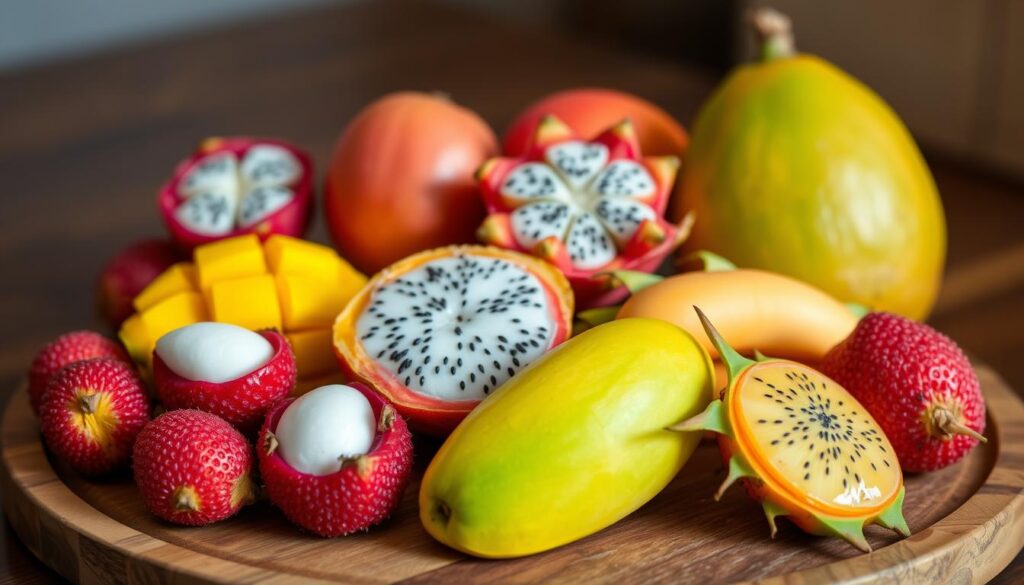
Making the perfect Chinese fruit cake begins with picking the right fruits. The fruits you choose can turn a simple dessert into a memorable treat. Asian fruits bring a burst of flavors and textures that make your cake stand out.
Here are some top picks for fruits:
- Strawberries: Sweet and vibrant red color
- Kiwis: Tangy with a unique green interior
- Mangoes: Tropical and rich in flavor
- Melons: Refreshing and delicate
- Durian: Adventurous option for authentic Asian taste
Getting your fruits ready is key for a stunning cake. Follow these expert tips:
- Slice fruits to the right thickness:
- Thin slices for multi-layer cakes
- Thicker cuts for single-layer designs
- Peel fruits carefully to keep their shape
- Use a melon baller for elegant round shapes
- Brush fruits with diluted apricot jam for a glossy look
Pro tip: Try seasonal fruits to create unique Asian fruit mixes. This will surprise and please your guests. The freshness and quality of your fruits greatly affect the cake’s taste and look.
Professional Assembly and Decoration Tips
Mastering cake layering techniques is key to making a stunning fruit cake. Your cake’s look depends on how well you assemble and decorate it.
Begin by leveling each cake layer with a sharp knife. This makes stacking easier. Decoration starts with a solid base.
- Chill cake layers before assembly to minimize crumbling
- Apply a thin layer of whipped cream between each cake layer
- Use a cake turntable for even frosting and decoration
- Create a crumb coat to seal in loose cake particles
Choose fruits that are similar in size and shape for decoration. Use patterns like circles or geometric shapes. Pro tip: Brush fruits with diluted apricot jam for a glossy, professional finish.
Have the right tools for a polished cake look:
| Tool | Purpose | Recommended Brand |
|---|---|---|
| Cake Turntable | Smooth frosting application | Ateco 12-inch Aluminum |
| Piping Tips | Decorative borders | Kootek 69-Piece Kit |
| Offset Spatula | Even cream spreading | 9-inch Angled Spatula |
Refrigerate your cake for at least an hour before serving. This lets the cream set and flavors blend. Your cake will be both beautiful and delicious.
Common Troubleshooting and Solutions

Cake baking problems can ruin your dream dessert. Knowing how to fix common fruit cake issues can help. This way, you can make a stunning cake every time.
Meringue and cream stability are key challenges in fruit cake making. If your meringue falls flat, try these tips:
- Use cream of tartar to stabilize egg whites
- Ensure all utensils are completely grease-free
- Whip egg whites at room temperature
- Add sugar gradually while whipping
Where you place the fruit can make or break your cake’s look. To avoid dried-out fruits, do the following:
- Brush fruits with apricot jam glaze
- Pat fruits dry before adding to batter
- Coat fruits lightly in flour to prevent sinking
Texture problems often come from bad mixing or baking. For a light, airy cake, remember to:
- Fold ingredients gently to preserve air bubbles
- Cool cakes upside down to prevent deflation
- Use anodized aluminum pans for even heat distribution
Pro tip: Create a parchment paper collar to help your cake rise evenly and prevent over-browning.
Conclusion
Making a homemade Asian fruit cake is more than cooking. It’s a dive into cultural traditions and fine baking skills. You’ll turn simple ingredients into amazing treats that show off Asian pastry arts.
The secret to success is balancing textures and flavors. Whether you use fresh mango in whipped cream or try new fruit mixes, your cake can match bakery standards. With practice and patience, you’ll get the sponge right and master decorations.
Each cake has a story—of culture, family, and creativity. Your desserts are more than sweets. They connect you to a deep culinary history that spans ages. Enjoy the journey, learn, and celebrate your baking success.
As you get better, you’ll see making these cakes as an art. It brings happiness, makes memories, and links you to a rich culinary tradition.
FAQ
What makes Chinese fruit cakes different from Western fruit cakes?
What are the key ingredients for a traditional Chinese fruit cake?
How do I achieve the signature light texture of Chinese fruit cakes?
What fruits work best for Asian fruit cakes?
How do I stabilize the whipped cream frosting?
What are common mistakes when making Chinese fruit cakes?
Can I make a Chinese fruit cake if I’m not experienced in baking?
How long can I store a Chinese fruit cake?
Source Links
- Asian Sponge Cake With Fruit — A Fresh Start – Tiancakes 2.0 – https://www.tiancakes.me/blog/asian-sponge-cake-with-fruit
- Yuzu Chiffon Layer Cake – Dessert First – https://dessertfirstgirl.com/2024/04/yuzu-chiffon-layer-cake.html
- Strawberry Japanese Mille Crepe Cake – https://www.indulgewithmimi.com/strawberry-japanese-mille-crepe-cake/
- A Slice of Chinatown Life: Phoenix Bakery and the Strawberry Whipped Cream Cake – https://www.lapl.org/collections-resources/blogs/lapl/slice-chinatown-life-phoenix-bakery-and-strawberry-whipped-cream
- Light and Airy Asian-Inspired Cream Cake | America’s Test Kitchen – https://www.americastestkitchen.com/articles/8042-asian-inspired-fruit-cream-cake
- Fruit Cream Cake with Chocolate Drip – https://bakabee.com/fruit-cream-cake/
- Cotton Cheesecake / Japanese Cheesecake – https://runawayrice.com/desserts/cotton-cheesecake-japanese-cheesecake/
- Strawberry Sponge Cake Recipe – https://natashaskitchen.com/strawberry-cake-recipe/
- The Best Moist Sponge Cake Recipe – https://www.spatuladesserts.com/tender-moist-tall-sponge-cake-full-baking-guide/
- Foolproof Vanilla Chiffon Cake – Catherine Zhang – https://zhangcatherine.com/chiffon-cake/?srsltid=AfmBOorwmOTzb-4mMWTV7JjyhhoPmnsH8tjgDy7xTRT6mIZXfGtYpVvk
- Chinese Sponge Cake Recipe – https://www.yumofchina.com/sponge-cake-recipe/
- Fresh Fruit Cream Cake | America’s Test Kitchen Recipe – https://www.americastestkitchen.com/recipes/16219-fresh-fruit-cream-cake
- Celebration Cake – http://craftstocrumbs.com/recipes/celebration-cake/
- Chef John’s Strawberry Crepe Cake – https://www.allrecipes.com/recipe/273285/chef-johns-strawberry-crepe-cake/
- Plum Cake (Blueberry and Peach, Too!) – https://www.justonecookbook.com/plum-cake/
- Fruit Sando or Sandon’t, There Is No Try – https://www.seriouseats.com/japanese-fruit-sandwich-recipe-8603819
- Pandan Honeycomb Cake (Bánh Bò Nướng) – https://pickyeaterblog.com/vietnamese-honeycomb-cake-banh-bo-nuong/
- Here Are the 11 Best Cake Decorating Tools for Any Baker – https://www.thespruceeats.com/best-cake-decorating-tools-4149469
- Blender Cakes Take the Anxiety Out of Baking – https://www.177milkstreet.com/2024/02/how-to-make-a-cake-in-a-blender
- Ube Cake – Catherine Zhang – https://zhangcatherine.com/ube-cake/?srsltid=AfmBOoo0ZXzO70FGLOpTXa2N3uuG2WVv8cN9gpVhMLFghQVgqCk67wuG
- Vancouver Ventures | DAY 5 (Pt. 2): Unveiling the Mango Cake + Fortune Terrace Chinese Dinner – http://www.quirkyaesthetics.com/-what-i-think/vancouver-ventures-day-5-pt-2-unveiling-the-mango-cake-fortune-terrace-chinese-dinner
- How a cake became a national obsession – https://www.sandiegouniontribune.com/2024/07/31/how-a-cake-became-a-national-obsession-2/
- Sweet Perfection: The Art of Castella, Japan’s Beloved Sponge Cake – https://www.bokksu.com/blogs/news/sweet-perfection-the-art-of-castella-japans-beloved-sponge-cake?srsltid=AfmBOop7y0g-23hFc1M5CDQh4qlG_N0eMLIfWZ84UBJLdLGQ_ozHWV_t

